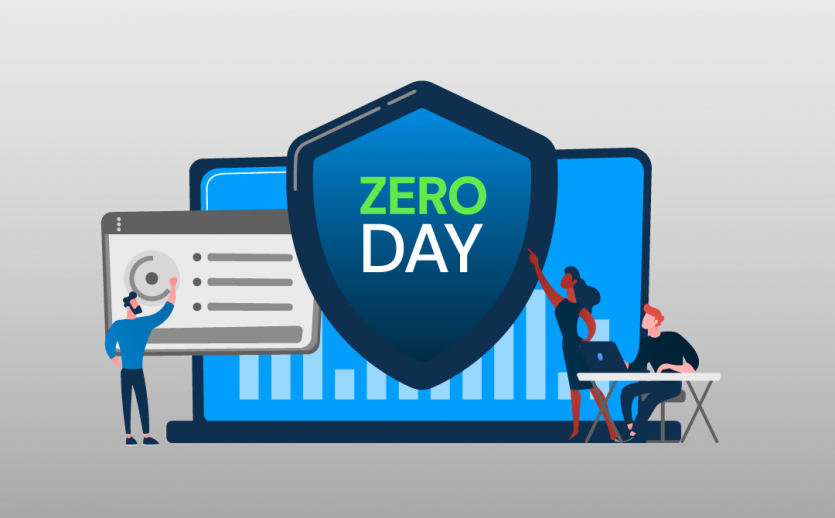What Is Meant By Zero Day Attack And Vulnerability?
Businesses Are Responsible For Protecting Their Organizations From Cyber Attacks To Comply With The Law And To Keep Their Employees, Customers, And Data Safe.
One of the most common vulnerabilities is the “zero-day vulnerability.” But let’s see what zero-day vulnerability is and how hackers exploit it.
According to the Sophos Zero Day Attack article, cyber-attacks have different security vulnerabilities. Businesses are responsible for protecting their organizations from these attacks to comply with the law and keep their employees, customers, and data safe. One of the most common vulnerabilities is the “zero-day vulnerability.” But let’s see what zero-day vulnerability is and how hackers exploit it.
What are “zero days” and “zero-day vulnerability”?
Applications are usually vulnerable after release. These vulnerabilities are often unintentional flaws or holes in software programs. For example, a security hole allows cybercriminals to access an organization’s data. Software developers are always looking for these vulnerabilities so that they can discover and analyze them and then provide a patch to fix the vulnerability.
Patches will be released in the next version of the software. However, as you can see, this process is time-consuming, sometimes it can take days, weeks, or even months; even when a zero-day patch is released, not all users implement it quickly; Therefore, hackers around the world can start exploiting a vulnerability as soon as they discover it and before a patch is released.
In other words, developers who have just learned about the vulnerability have zero days to find a solution to the problem; Hence, such vulnerabilities are called “zero-day vulnerabilities.” A zero-day attack occurs when hackers exploit this flaw before developers have had a chance to fix it.
The terms vulnerability, exploit, and attack is often used interchangeably with the term “zero-day,” It is essential to understand the difference between them.
- Attackers discover a “zero-day vulnerability” before the business or software owner becomes aware of it. Hence, there is no opportunity to release a patch for a discovered vulnerability, and no patch is available for zero-day vulnerabilities; This increases the probability of successful attacks.
- A zero-day exploit is a method hackers use to attack systems with zero-day vulnerabilities.
- A “zero-day attack” uses a zero-day exploit to damage or steal data from a system with a zero-day vulnerability.
What is a zero-day attack, and how does it work?
As we mentioned, sometimes hackers or attackers discover app vulnerabilities before software developers do. So, they take the opportunity to write and implement code to exploit that vulnerability. This code is known as “exploit code.” Exploit code, for example, can victimize software users through identity theft or cybercrime. After attackers have identified a zero-day vulnerability, they need a way to gain access to the vulnerable system.
They often do this through email. For example, they send an email or any message that appears to be from a known or legitimate source (but is actually from an attacker). This message tries to convince the user to take action, such as opening a file or visiting a malicious website.
Exploits are sold on the dark web for huge sums; however, they are valid until developers release patches and all users implement them. Once a vulnerability is discovered and fixed, it is no longer considered a zero-day threat.
Zero-day attacks are one of the most dangerous attacks because usually, the only people who know about them are the attackers themselves. In recent years, hackers have quickly exploited vulnerabilities immediately after discovering them. Once attackers break into a network, they can attack directly or sit back and wait for the best time.
Who carries out the zero-day attacks?
Attackers who carry out zero-day attacks fall into different categories depending on the attack’s motivation. For example:
- Cybercriminals: Hackers whose motivation is often financial exploitation.
- Hacktivists: Politically or socially motivated hackers who want to mediate attacks to draw public attention to their cause.
- Corporate espionage: Hackers who spy on companies to obtain information about them.
- Cyber warfare: This type of attacker aims to spy on or attack the cyber infrastructure of another country.
Targets of zero-day attacks
A zero-day attack can exploit vulnerabilities in a variety of systems, including:
- Operating systems
- Web browsers
- Office applications
- Open source components
- hardware
- Internet of Things (IoT)
Hackers can exploit security vulnerabilities to compromise devices and build large botnets. Therefore, there is a wide range of possible victims, for example:
- People use a vulnerable system, such as an outdated browser or operating system.
- People who have access to valuable business data.
- Large companies and organizations
- Government organizations
Even when attackers do not target specific individuals, large numbers of people can still be affected by zero-day attacks. Untargeted attacks aim to trap as many users as possible.
Examples of the latest zero-day attacks
Chrome
In 2021, Google Chrome faced a series of zero-day threats that prompted it to release updates. The vulnerability was caused by a flaw in the V8 JavaScript engine used in the web browser.
Zoom
2020, a vulnerability was found in the popular video conferencing platform. In this zero-day attack, hackers would gain access to a user’s computer remotely if they used an older version of Windows. A hacker could completely take over their device and access all their files.
Apple iOS
Apple’s iOS is often regarded as the most secure smartphone platform. However, in 2020, it fell victim to at least two iOS zero-day vulnerabilities, including a zero-day bug that left iPhones vulnerable to attackers remotely.
How to identify zero-day attacks?
Organizations attacked by a zero-day exploit may see unexpected traffic or suspicious scanning activity from a client or service. Since zero-day vulnerabilities can take many forms, such as broken algorithms, password security issues, and more, identifying them can be challenging. Detailed information about zero-day exploits is available only after the exploit is identified.
One technique for detecting zero-day attacks is looking for zero-day malware characteristics based on how they interact with the target system. Instead of examining the code of incoming files, this technique looks at their interactions with existing software and tries to determine whether they result from malicious actions. Also, machine learning is used to create a baseline for system behavior based on data from past and current interactions with the application.
How to protect computers and critical data from zero-day attacks?
Individuals and organizations must follow approved cybersecurity practices to protect against zero-day attacks and protect their computers and important data. Several strategies can help you protect your business from zero-day attacks:
Keep all software and operating systems up to date
You can enable automatic app updates; In this case, your application will be updated without manual intervention. This is necessary because security patches are added in new versions to cover newly identified vulnerabilities. Therefore, it is not enough for developers to release patches; users must ensure their security by applying these patches by keeping their applications up to date.
Use essential apps as much as possible.
The more software you have on your system, the more potential vulnerabilities you have. Therefore, you can reduce your risk by installing only the needed apps.
Use a firewall
One of the standard methods to prevent zero-day vulnerabilities is to use WAF – Web application firewall.
A simple explanation for the performance of these types of firewalls is that by preventing common vulnerabilities in web applications, they minimize the possibility of intrusion and sabotage to the application.
The important point in using WAFs is to keep their rules up-to-date. This means that every day different vulnerabilities are identified and added to the list of these firewalls so that they can prevent various known vulnerabilities.
Some of these famous attacks that are checked and stopped with the help of WAFs can be mentioned below:
- Cross-site Request Forgery
- Cross-Site Scripting (XSS)
- SQL injection
- Announcements from OWASP
Today, many hardware firewalls also have WAF capability and can be used for web application security.
For example, Sophos products in both XG and XGS series have this security feature.
Educate your organization’s employees
- Many zero-day attacks capitalize on human user error. Teaching employees and users good security habits help keep them safe online and protect organizations from zero-day exploits and other third-party threats.
Use antivirus software
- Antiviruses help keep your devices safe by blocking threats.
Buy a firewall
- As mentioned above, one of the ways to prevent zero-day attacks is a firewall. As one of the best security solutions, Sophos firewall can keep your organization safe from such attacks.
- By purchasing a firewall from a Sophos representative, you benefit from unique benefits such as permanent support, a valid replacement warranty, and installation and delivery by a technical expert.














